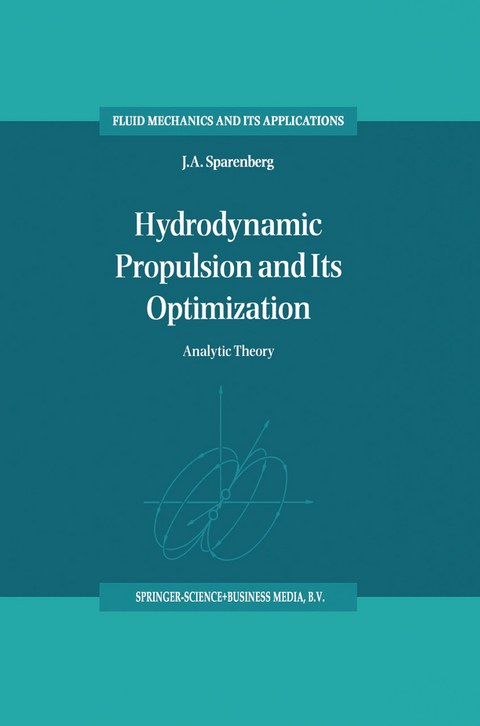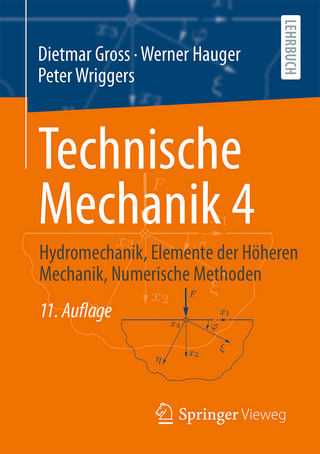
Hydrodynamic Propulsion and Its Optimization
Analytic Theory
Seiten
1994
Springer (Verlag)
978-0-7923-3201-5 (ISBN)
Springer (Verlag)
978-0-7923-3201-5 (ISBN)
HYDRODYNAMIC PROPULSION AND ITS OPTIMIZATION ANALYTIC THEORY Hydrodynamic propulsion has been of major interest ever since craft took to the water. In the course of time, many attempts have been made to invent, develop, or to improve hydrodynamic propulsion devices. Remarkable achievements in this field were made essentially by experienced individuals, who were in need of reliable propulsion units such as paddle wheels, sculling devices, screw propellers, and of course, sails. The problem of minimizing the amount of input energy for a prescribed effective output was first investigated seriously at the beginning of this century. In 1919, BETZ presented a paper on air-screw propellers with minimum consumption of energy which could be applied to ship-screw propellers also. Next, attempts were made to optimize hydrodynamic propulsion units. Ensuing investigations concerned the optimization of the hydrodynamic system: ship-propeller. The first simple theory of ship propulsion which was presented considered more or less only thrust augmentation, wake processing and modification of propeller characteristics when operating behind the ships hull. This theory has been little improved meanwhile and is still useful, particularly with regard to practical ship design and for evaluating results of ship model tests. However, this theory is not adequate for optimization procedures necessary for high-technology propulsion, particularly for ship propellers utilizing propulsion improving devices such as tip end plates or tip fins at the propeller blades, spoilers in front of the propeller, asymmetrical stern etc.
1: Basic Hydrodynamics.- 2: The Actuator Surface.- 3: The Ship Screw.- 4: Unsteady Propulsion.- 5: Optimization Theory.- 6: Applications of optimization Theory.- 7: On the Existence of Optimum Propulsion.- Appendices.- A. The Hilbert Problem.- A.1. The Formulas of Plemelj.- A.2. The Hilbert Problem for an Arc.- A.3. Singular Integral Equations.- B. Curvilinear Coordinates.- B.1. Concepts of Tensor Analysis.- B.2. Cylindrical and Helicoidal Coordinate Systems.- C. Some Identities.- D. On Linear Partial Differential Equations.- D.l. The Convolution.- D.2. Solution of Linear Partial Differential Equations.- E. Dimensional Analysis.- References.
| Erscheint lt. Verlag | 31.12.1994 |
|---|---|
| Reihe/Serie | Fluid Mechanics and Its Applications ; 27 |
| Zusatzinfo | XVI, 376 p. |
| Verlagsort | Dordrecht |
| Sprache | englisch |
| Maße | 155 x 235 mm |
| Themenwelt | Naturwissenschaften ► Physik / Astronomie ► Mechanik |
| Technik ► Maschinenbau | |
| ISBN-10 | 0-7923-3201-6 / 0792332016 |
| ISBN-13 | 978-0-7923-3201-5 / 9780792332015 |
| Zustand | Neuware |
| Informationen gemäß Produktsicherheitsverordnung (GPSR) | |
| Haben Sie eine Frage zum Produkt? |
Mehr entdecken
aus dem Bereich
aus dem Bereich
Statik - Kinematik - Kinetik - Schwingungen - Festigkeitslehre
Buch | Hardcover (2021)
Hanser, Carl (Verlag)
29,99 €
Hydromechanik, Elemente der Höheren Mechanik, Numerische Methoden
Buch | Softcover (2023)
Springer Vieweg (Verlag)
49,99 €


